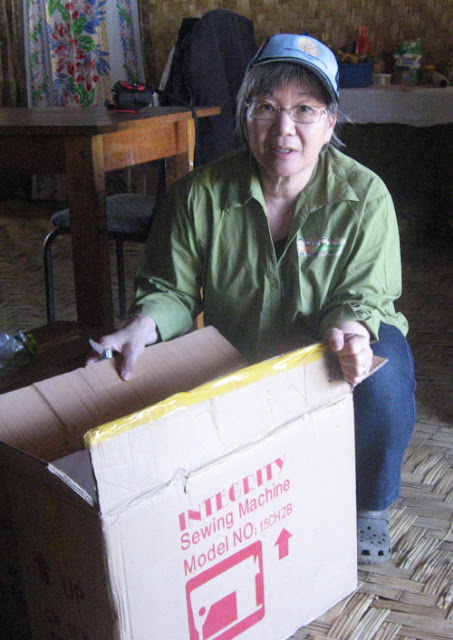| Rotarians from Yea, Victoria clebrate the installation of a water tank at Mando village, PNG. It is said that the Mando spirit moves mountains. However, it takes a team of Rotary volunteers to complete a project job list. In the last threee years, we have provided free primary education by building new classrooms, reduced the infant mortality rate by encouraging mothers to have their babies in the hospital or medical centre by providing maother and baby packs, began the process of including students with special needs in the school, supplemented family incomes by teaching living schools and establishing pig and chicekn breeding projects at the school. Here is a video summary of what has been achieved our recent trip - MANDO 2010 VIDEO Thanks to our intrepid leader, Wendy Stein for the production of this clip to highlight the achievements Clean water on tap Village men help unload new tank |
Replacing the floor of the principal's house
Interior decorators at work
First litter of pigs sold
Practising grandparenting skills
Thanks to our friends in Mando for welcoming us,taking care of us and sharing so generously your culture and accepting us in your daily lives, and offering us such genuine friendship and goodwill and thanks to our fellow team members for your friendship, hard work and inspiration and motivation to help others.



















Comments
Post a Comment
Thanks for reading my blog and please share your thoughts about my blog post by leaving a comment.Your comment won't appear immediately as comments are verified before publication in an effort to reduce the amount of spam appearing. Anonymous comments will not be published.